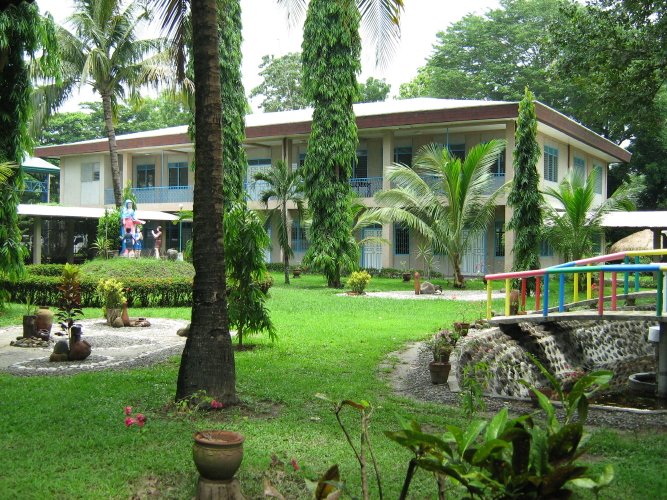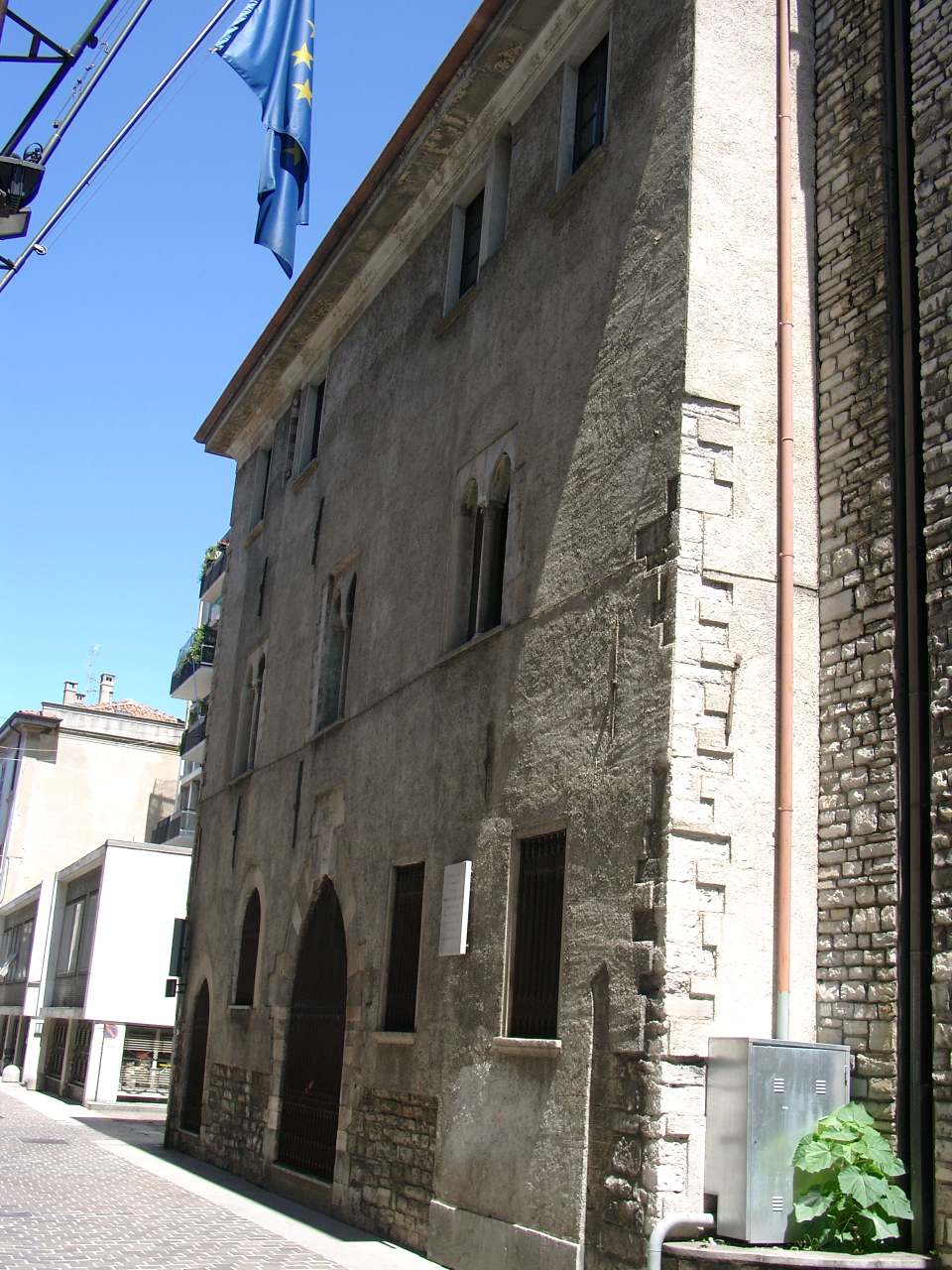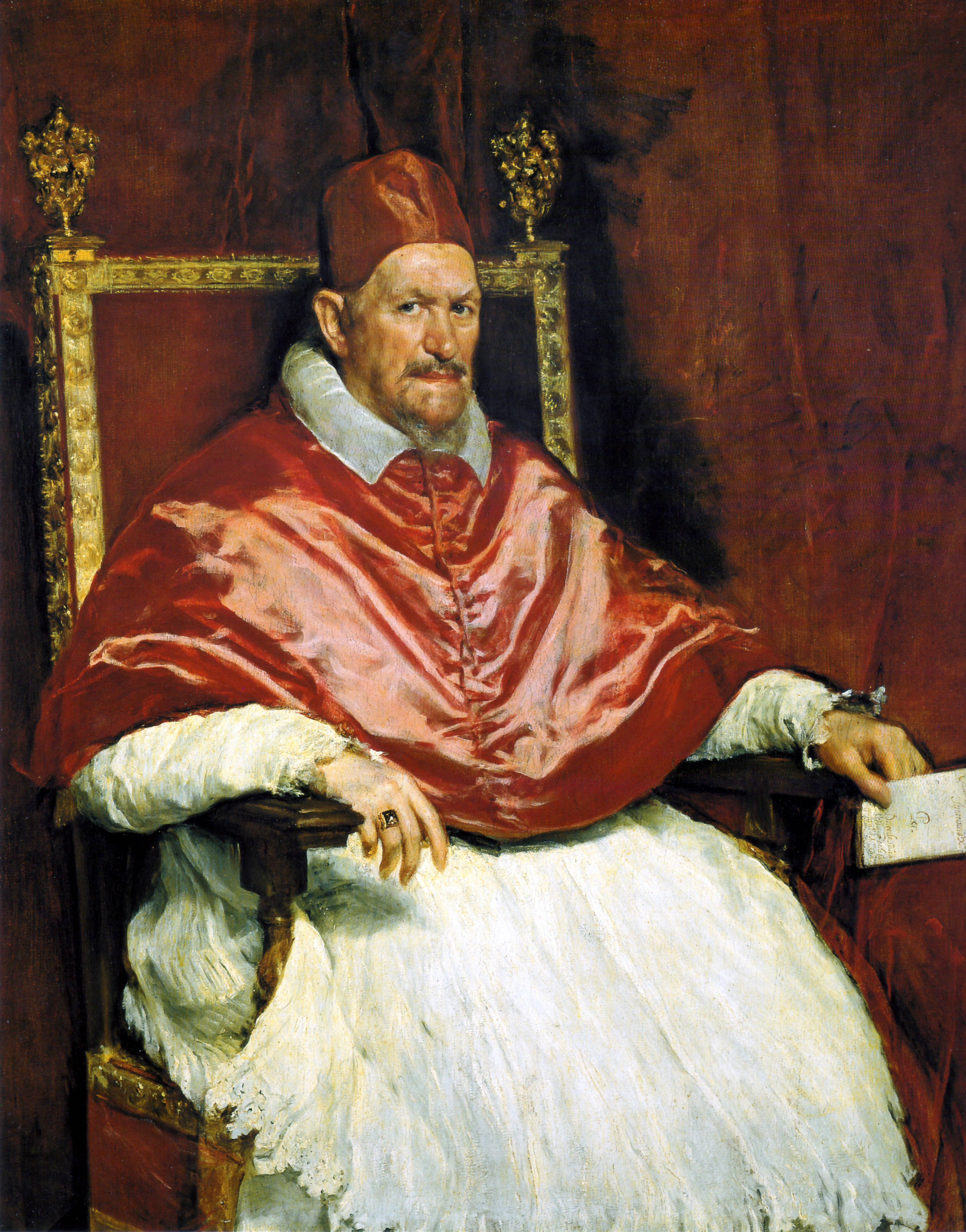|
Alessandro Crescenzi (cardinal)
Alessandro Crescenzi, C.R.S. (1607 – 8 May 1688) was a Roman Catholic cardinal who served as Camerlengo of the Sacred College of Cardinals (1685–1688), Archbishop (Personal Title) of Recanati e Loreto (1676–1682), Titular Patriarch of Alexandria (1671–1676), Bishop of Bitonto (1652–1668), Bishop of Ortona a Mare e Campli (1644–1652), and Bishop of Termoli (1643–1644). Biography Alessandro Agostino Crescenzi was born in Rome, Italy, in 1607, the son of Giovanni Battista Crescenzi and Anna Massimi. He is related to Cardinal Marcello Crescenzi (named 1542) and is the nephew of Cardinal Pier Paolo Crescenzi (named 1611). He was ordained a priest in the Ordo Clericorum Regularium a Somascha. On 13 July 1643, he was elected during the papacy of Pope Urban VIII as Bishop of Termoli. On 26 July 1643, he was consecrated bishop by Alessandro Cesarini (iuniore), Cardinal-Deacon of Sant'Eustachio. On 13 June 1644, he was appointed during the papacy of Pope Urban VI ... [...More Info...] [...Related Items...] OR: [Wikipedia] [Google] [Baidu] |
Catholic Church
The Catholic Church, also known as the Roman Catholic Church, is the largest Christian church, with 1.3 billion baptized Catholics worldwide . It is among the world's oldest and largest international institutions, and has played a prominent role in the history and development of Western civilization.O'Collins, p. v (preface). The church consists of 24 ''sui iuris'' churches, including the Latin Church and 23 Eastern Catholic Churches, which comprise almost 3,500 dioceses and eparchies located around the world. The pope, who is the bishop of Rome, is the chief pastor of the church. The bishopric of Rome, known as the Holy See, is the central governing authority of the church. The administrative body of the Holy See, the Roman Curia, has its principal offices in Vatican City, a small enclave of the Italian city of Rome, of which the pope is head of state. The core beliefs of Catholicism are found in the Nicene Creed. The Catholic Church teaches that it is the on ... [...More Info...] [...Related Items...] OR: [Wikipedia] [Google] [Baidu] |
Ordo Clericorum Regularium A Somascha
, image = SomascosEscut.jpg , image_size = 200px , caption = Coat of arms of the Somascan Fathers , abbreviation = CRS , nickname = Somascans , formation = , founder = St. Fr. Jerome Emiliani, CRS , founding_location = Venice, Italy , type = Order of Clerics Regular of Pontifical Right for men , headquarters = Generalate Via Casal Morena 8, Morena - Rome, Italy , coords = , num_members = 520 members (includes 327 priests) as of 2020 , leader_title = Superior General , leader_name = José Antonio Nieto Sepúlveda , leader_title2 = Motto , leader_name2 = la, Onus Meum LeveEnglish: ''Lighten my Burden'' , leader_title3 = Patron saints , leader_name3 = , leader_title4 = Continents served , leader_name4 = Europe, Americas, Asia Africa , parent_organization = Roman Catholic Church , webs ... [...More Info...] [...Related Items...] OR: [Wikipedia] [Google] [Baidu] |
Bishop Of Capaccio
The Italian Catholic Diocese of Vallo della Lucania ( la, Dioecesis Vallensis in Lucania), in Campania, has existed under this name since 1945. It is a suffragan of the Archdiocese of Salerno-Campagna-Acerno."Diocese of Vallo della Lucania" ''''. David M. Cheney. Retrieved February 29, 2016"Diocese of Vallo della Lucania" ''GCatholic.org.'' Gabriel Chow. Retrieved February 29, 2016 Before renaming in 1945, it was the historical |
Andrea Bonito
Andrea Bonito, C.O. (1619 – 2 February 1684) was a Roman Catholic prelate who served as Bishop of Capaccio (1677–1674). ''(in Latin)'' Biography Andrea Bonito was born in Amalfi, Italy in 1619 and ordained a priest in the Oratory of Saint Philip Neri. On 14 June 1677, he was appointed during the papacy of Pope Innocent XI as Bishop of Capaccio. On 20 June 1677, he was consecrated bishop by Alessandro Crescenzi (cardinal), Bishop of Recanati e Loreto, with Carlo Vaini, Titular Archbishop of ''Nicaea'', and Prospero Bottini Prospero Bottini (1621 – 21 March 1712) was a Roman Catholic prelate who served as Titular Archbishop of ''Myra'' (1675–1712). ''(in Latin)'' Biography Prospero Bottini was born in Lucan, Italy in 1621. On 15 July 1675, he was appointed ..., Titular Archbishop of ''Myra'', serving as co-consecrators. He served as Bishop of Capaccio until his death on 2 February 1684. References External links and additional sources * (for Chronology o ... [...More Info...] [...Related Items...] OR: [Wikipedia] [Google] [Baidu] |
Principal Consecrator
A consecrator is a bishop who ordains someone to the episcopacy. A co-consecrator is someone who assists the consecrator bishop in the act of ordaining a new bishop. The terms are used in the canon law of the Catholic Church, Lutheran Churches, in Anglican communities, and in the Eastern Orthodox Church. History The church has always sought to assemble as many bishops as possible for the election and consecration of new bishops. Although due to difficulties in travel, timing, and frequency of consecrations, this was reduced to the requirement that all comprovincial (of the same province) bishops participate. At the Council of Nicæa it was further enacted that "a bishop ought to be chosen by all the bishops of his province, but if that is impossible because of some urgent necessity, or because of the length of the journey, let three bishops at least assemble and proceed to the consecration, having the written permission of the absent." Consecrations by the Pope were exempt fro ... [...More Info...] [...Related Items...] OR: [Wikipedia] [Google] [Baidu] |
Camerlengo Of The Sacred College Of Cardinals
The Camerlengo of the Sacred College of Cardinals was the treasurer of the College of Cardinals in the Catholic Church. The title is based on an Italian word for chamberlain, a word no longer used in secular contexts. The position existed from at least 1272 until 1997, when it was allowed to lapse. The Camerlengo administered all property, fees, funds and revenue belonging to the College of Cardinals, celebrated the requiem mass for a deceased cardinal and was charged with the registry of the '' Acta Consistoralia''. It is believed that the post was created by Pope Eugene III in 1150, but there is no documentary proof of its existence before the pontificate of Pope Innocent III, or perhaps even before the year 1272. List of Camerlengos of the Sacred College of Cardinals 1198 to 1439 * Cencio Savelli (1198–1216) *(1217–1271 – no information found) *Guillaume de Bray (1272–1282) *(1283–1287 no information found) * Pietro Peregrosso (1288–1295) *Hugh Aycelin (1295–1 ... [...More Info...] [...Related Items...] OR: [Wikipedia] [Google] [Baidu] |
Pope Innocent XI
Pope Innocent XI ( la, Innocentius XI; it, Innocenzo XI; 16 May 1611 – 12 August 1689), born Benedetto Odescalchi, was head of the Catholic Church and ruler of the Papal States from 21 September 1676 to his death on August 12, 1689. Political and religious tensions with Louis XIV of France were a constant preoccupation for Innocent XI. Within the Papal States, he lowered taxes, produced a surplus in the papal budget and repudiated nepotism within the Church. Innocent XI was frugal in his governance of the Papal States, his methods evident in matters ranging from his manner of dress to a wide range of standards of personal behavior consistent with his conception of Christian values. Once he was elected to the papacy, he applied himself to moral and administrative reform of the Roman Curia. He abolished sinecures and pushed for greater simplicity in preaching as well as greater reverence in worship, requesting this of both the clergy and faithful. In consideration of his di ... [...More Info...] [...Related Items...] OR: [Wikipedia] [Google] [Baidu] |
Papal Conclave, 1676
The 1676 papal conclave was convened after the death of Pope Clement X and lasted from 2 August until 21 September 1676. It led to the election of Cardinal Benedetto Odescalchi as Pope Innocent XI. Conclave After the death of Pope Clement X on 22 July 1676, the College of Cardinals convened in Rome to elect a successor. The college consisted of 67 members: 44 of them took part at the opening of the conclave, and the number rose to 63 when others finally arrived from abroad. Seven of these cardinals had been created by Urban VIII, twelve by Innocent X, eight by Alexander VII, and nineteen by Clement IX and Clement X. Absent cardinals included Friedrich of Hessen and Pascal of Aragon. A list was already in circulation indicating possible papal candidates. Only Cardinal Benedetto Odescalchi was suitably ''"papabile"'' at the time of the conclave. Odescalchi had emerged as a strong candidate for the papacy after the earlier death of Pope Clement IX on 9 December 1669, but the French G ... [...More Info...] [...Related Items...] OR: [Wikipedia] [Google] [Baidu] |
Santa Prisca
Santa Prisca is a titular church of Rome, on the Aventine Hill, for Cardinal-priests. It is recorded as the ''Titulus Priscae'' in the acts of the 499 synod. Church It is devoted to Saint Prisca, a 1st-century martyr, whose relics are contained in the altar in the crypt. It was built in the 4th or 5th century over a temple of Mithras. Damaged in the Normans, Norman Sack of Rome (1084), Sack of Rome, the church was restored several times. The current aspect is due to the 1660 restoration, which included a new facade by Carlo Lombardi (architect), Carlo Lombardi. In the interior, the columns are the only visible remains of the ancient church. Also a baptismal font allegedly used by Saint Peter is conserved. The frescoes in the crypt, where an altar contains the relics of Saint Prisca, are by Antonio Tempesta. Anastasio Fontebuoni frescoed the walls of the nave with ''Saints and angels with the instruments of passion''. In the sacristy hangs a painting of the ''Immaculate concepti ... [...More Info...] [...Related Items...] OR: [Wikipedia] [Google] [Baidu] |
Pope Clement X
Pope Clement X ( la, Clemens X; it, Clemente X; 13 July 1590 – 22 July 1676), born Emilio Bonaventura Altieri, was head of the Catholic Church and ruler of the Papal States from 29 April 1670 to his death in July 1676. Elected pope at age 79, he has since been ranked as the oldest pope at the time of his election. Early life Emilio Boneventura Altieri was born in Rome in 1590, the son of Lorenzo Altieri and Vittoria Delfin, a noble Venetian lady, sister of Flaminio Delfin, commander general of the Papal Armies, and of Gentile Delfin, Bishop of Camerino. His brother was Giambattista Altieri. The Altieri family belonged to the ancient Roman nobility and had enjoyed the highest consideration at Rome for several centuries; they had occasionally contracted alliances with the Colonnas and the Orsinis. During earlier pontificates, the Altieri held many important offices and had been entrusted with several delicate missions. Early work Altieri received a doctorate in law fr ... [...More Info...] [...Related Items...] OR: [Wikipedia] [Google] [Baidu] |
Apostolic Nuncio To Savoy
The Apostolic Nunciature to Savoy was an ecclesiastical office of the Catholic Church to the Duchy of Savoy, Italy. It was a diplomatic post of the Holy See, whose representative is called the Apostolic Nuncio with the rank of an ambassador. The office ceased to exist in 1795 soon after the Duchy of Savoy was occupied by French revolutionary forces in 1792 after the French Revolution . References Savoy Savoy (; frp, Savouè ; french: Savoie ) is a cultural-historical region in the Western Alps. Situated on the cultural boundary between Occitania and Piedmont, the area extends from Lake Geneva in the north to the Dauphiné in the south. Savo ... Apostolic Nuncios to Savoy {{italy-stub ... [...More Info...] [...Related Items...] OR: [Wikipedia] [Google] [Baidu] |
Pope Innocent X
Pope Innocent X ( la, Innocentius X; it, Innocenzo X; 6 May 1574 – 7 January 1655), born Giovanni Battista Pamphilj (or Pamphili), was head of the Catholic Church and ruler of the Papal States from 15 September 1644 to his death in January 1655. Born in Rome of a family from Gubbio in Umbria who had come to Rome during the pontificate of Pope Innocent IX, Pamphili was trained as a lawyer and graduated from the Collegio Romano. He followed a conventional ''cursus honorum'', following his uncle Girolamo Pamphili as auditor of the Rota, and like him, attaining the position of cardinal-priest of Sant'Eusebio. Before becoming pope, Pamphili served as a papal diplomat to Naples, France, and Spain. Pamphili succeeded Pope Urban VIII (1623–44) on 15 September 1644 as Pope Innocent X, after a contentious papal conclave that featured a rivalry between French and Spanish factions. Innocent X was one of the most politically shrewd pontiffs of the era, greatly increasing the tempor ... [...More Info...] [...Related Items...] OR: [Wikipedia] [Google] [Baidu] |
.jpg)



